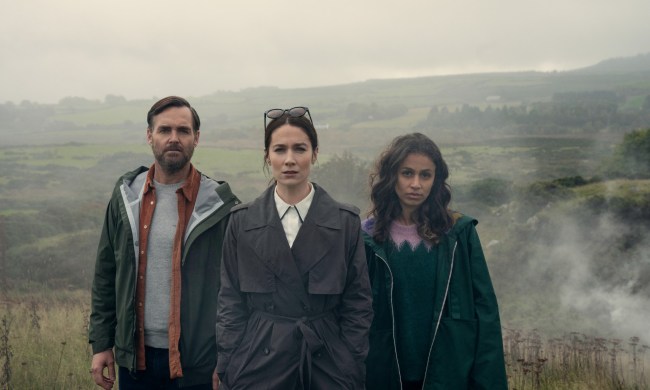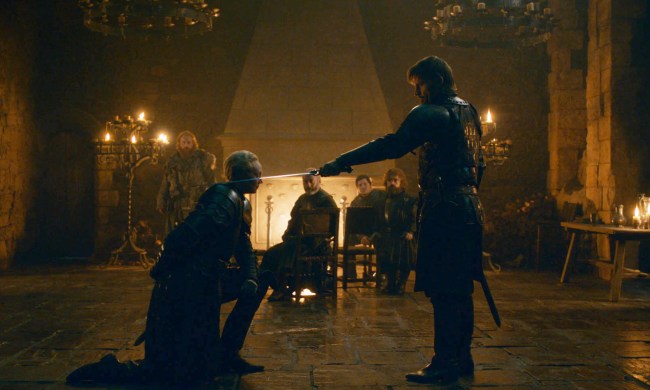Apple is spending hundreds of millions of dollars on The Morning Show, the flagship series for its upcoming Apple TV+ streaming service. According to a report by The Financial Times, episodes of the drama cost more than $15 million each, making each one more expensive than an installment of Game of Thrones.
Where is all of that money going? The Morning Show is a Newsroom-esque drama about “the power dynamic between women and men” in the news media. It’s set in the real world. There are no dragons. No giants. No ice zombies. The Morning Show won’t feature large-scale battles that put big Hollywood blockbusters to shame. It won’t burn an entire fantasy kingdom to the ground.
But take a look at The Morning Show‘s cast list: Jennifer Aniston. Reese Witherspoon. Steve Carell. It also features well-known character actors like Billy Crudup, Néstor Carbonell, Mark Duplass, and Gugu Mbatha-Raw.
Suddenly, it all starts to make sense.
Game of Thrones launched with a handful of known actors, most notably Sean Bean (who appeared for less than a season), Peter Dinklage, and Lena Headey, but they were hardly A-list stars. Other actors, including Emilia Clarke and Kit Harrington, were virtually unknown. They didn’t make Game of Thrones. Game of Thrones made them.
By contrast, Apple is banking on name recognition to drive Apple TV+ subscriptions. Celebrities, not content, were the thrust of Apple’s March 2019 “Showtime” event, during which the tech giant unveiled Apple TV+ to the masses. The message since then been consistent: Want to see what the most famous people in show business are up to? Subscribe to Apple TV+.
The list of shows and movies coming to Apple TV+ backs this idea up. Apple has enlisted Steven Spielberg, J.J. Abrams, Oprah Winfrey, M. Night Shyamalan, Sofia Coppola, Bill Murray, Jason Momoa, and more to create content for the new streaming network. The projects themselves are little more than loglines, but no matter what these shows are about, Apple wants you know who’s involved.
Overall, The Financial Times says that Apple is spending $6 billion on original Apple TV+ content, a massive increase from its initial $1 billion investment. It’s easy to see why: Big names come at a big cost, and Apple is willing to pay.
Apple isn’t the only company pouring big bucks into streaming content, of course. Netflix spends $15 billion a year producing original programming, and has handed out six-figure development deals to people like Ryan Murphy, Shonda Rhimes, and Game of Thrones‘ own David Benioff and D.B. Weiss. Amazon is spending $1 billion on its Lord of the Rings prequel alone.
Still, there’s a difference. Murphy, Rhimes, Benioff, and Weiss are creators first and celebrities second. Casual TV viewers probably may not even know who those people are, even though they’ve certainly heard of Grey’s Anatomy, American Horror Story, and Game of Thrones. Tolkien’s Middle-earth is known for its stories, not its red carpet appearances.
Netflix and its ilk are paying for content. Apple TV+ is banking on star power. It’s too early to say if Apple’s strategy will work, but in an increasingly crowded streaming service market, it’s hard to fault a company for doing anything it can to stand apart. Keep an eye on Apple TV+. Apple just might be onto something.


